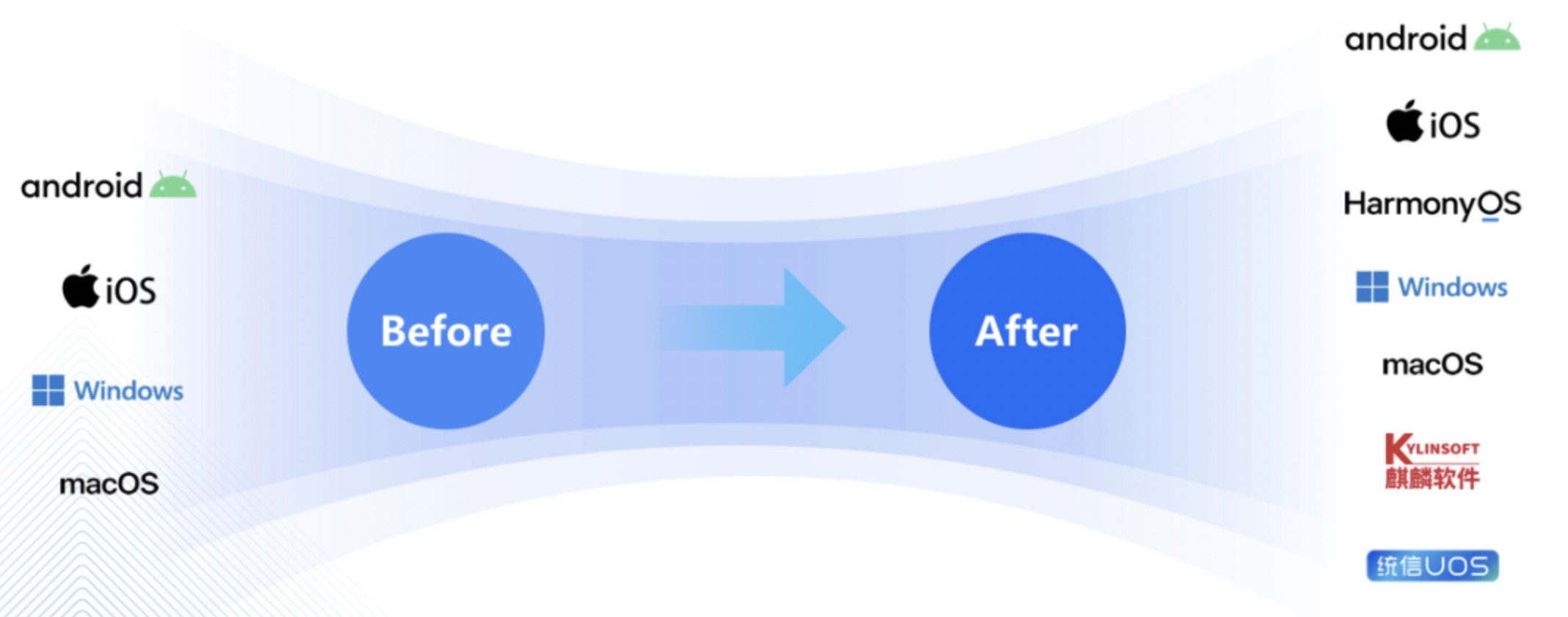微前端架构如何改变企业的开发模式与效率提升
1303
2022-10-01

SpringBoot自定义注解开发指南

目录一、java注解(Annotation)1、JDK基本注解2、JDK元注解二、自定义注解开发1、含义2、演示三、完成切面日志操作四、完成前端响应反应总结
一、Java注解(Annotation)
含义:Java注解是附加在代码中的一些元信息,用于一些工具在编译、 运行时进行解析和使用,起到说明、配置的功能。
1、JDK基本注解
@Override ——》重写
@Deprecated ——》已过时
@SuppressWarnings(value = "unchecked") ——》压制编辑器警告
2、JDK元注解
含义:元注解用于修饰其他的注解(纪委:管干部的干部)
①、@Retention ——》定义注解的保留策略
@Retention(RetentionPolicy.SOURCE) //注解仅存在于源码中,在class字节码文件中不包含@Retention(RetentionPolicy.CLASS)//默认的保留策略,注解会在class字节码文件中存在,但运行时无法获得,@Retention(RetentionPolicy.RUNTIME)//注解会在class字节码文件中存在,在运行时可以通过反射获取到
②、@Target ——》指定被修pPowolEvQi饰的Annotation可以放置的位置(被修饰的目标)
@Target(ElementType.TYPE) ——》接口、类 @Target(ElementType.FIELD) ——》属性 @Target(ElementType.METHOD) ——》方法 @Target(ElementType.PARAMETER) ——》方法参数 @Target(ElementType.CONSTRUCTOR) ——》构造函数 @Target(Ehttp://lementType.LOCAL_VARIABLE) ——》局部变量 @Target(ElementType.ANNOTATION_TYPE) ——》注解 @Target(ElementType.PACKAGE) ——》包
注:可以指定多个位置,如:
@Target({ElementType.METHOD, ElementType.TYPE}),也就是此注解可以在方法和类上面使用
③、@Inherited:指定被修饰的Annotation将具有继承性
④、@Documented:指定被修饰的该Annotation可以被javadoc工具提取成文档.
二、自定义注解开发
1、含义
使用@interface关键字, 其定义过程与定义接口非常类似, 需要注意的是:
Annotation的成员变量在Annotation定义中是以无参的方法形式来声明的, 其方法名和返回值类型定义了该成员变量的名字和类型, 而且我们还可以使用default关键字为这个成员变量设定默认值
2、演示
①、枚举类:enum,指的是常量的集合
②、注解类
Ⅰ、演示@Retention(RetentionPolicy.SOURCE)注解:MyAnnotation.java
package com.lv.annotation;
import org.springframework.beans.factory.annotation.Autowired;
import java.lang.annotation.*;
/**
* @author T440s
*/
//生成一个注释
@Documented
//表示当前注解可以打在什么东西上面,此处可以放在类上与方法上
@Target({ElementType.TYPE,ElementType.METHOD})
//指定被修饰的Annotation将具有继承性
@Inherited
//注解仅存在于源码中,在class字节码文件中不包含
@Retention(RetentionPolicy.SOURCE)
public @interface MyAnnotation {
String value() default "";
}
TestController.java:注意这引用了MyAnnotation注解
package com.lv.controller;
import com.lv.annotation.MyAnnotation;
import org.springframework.beans.factory.annotation.Autowired;
import org.springframework.stereotype.Controller;
@MyAnnotation
@Controller
public class TestController {
@Autowired
private String name;
@MyAnnotation
public void aa(){
}
}
运行后target层注解消失:注解仅存在于源码中,在class字节码文件中不包含
Ⅱ、MyAnnotation注解为@Retention(RetentionPolicy.RUNTIME)时
——注解会在class字节码文件中存在,在运行时可以通过反射获取到
运行test.java:
package com.lv.controller;
import java.lang.annotation.Annotation;
public class Test {
public static void main(String[] args) {
// 反射
for(Annotation a:TestController.class.getAnnotations()){
System.out.println(a);
}
}
}
Ⅲ、取注解里的属性值
注解:MyAnnotation.java
String message() default "aaa";
拿值:
package com.lv.controller;
import com.lv.annotation.MyAnnotation;
import java.lang.annotation.Annotation;
public class Test {
public static void main(String[] args) {
// 反射
for(Annotation a:TestController.class.getAnnotations()){
if(a instanceof MyAnnotation){
System.out.println(((MyAnnotation) a).message());
}
}
}
}
Ⅳ、判断在该类有无该注解
测试:
package com.lv.controller;
import com.lv.annotation.MyAnnotation;
import java.lang.annotation.Annotation;
public class Test {
public static void main(String[] args) {
// 直接将MyAnnotation这注解取出
MyAnnotation myAnnotation=TestController.class.getAnnotation(MyAnnotation.class);
if(myAnnotation !=null){
System.out.println(myAnnotation.message());
}
}
}
三、完成切面日志操作
当我们在写增删改的时候,会有很多冗余的代码,后期修改很麻烦,如:
@RequestMapping("/add")
public String add(){
System.out.println("xxx在增加");
System.out.println("增加成功");
return "yes";
}
我们就可以定义aop面向切面,将前面那部分放入前置通知,后面一部分后置通知
新建切面:LogAop.java
package com.lv.aop;
import org.aspectj.lang.ProceedingJoinPoint;
import org.aspectj.lang.Signature;
import org.aspectj.lang.annotation.Around;
import org.aspectj.lang.annotation.Aspect;
import org.aspectj.lang.annotation.Pointcut;
import org.springframework.stereotype.Component;
@Aspect
//类不被识别,将类变成一个组件
@Component
@Slf4j
public class LogAop {
// 指定切入的规则,".."代表可有参可无参
@Pointcut("execution(* com.lv.controller.*Controller.*(..))")
public void logger(){}
// 环绕通知
@Around("logger()")
public Object around(ProceedingJoinPoint point){
// 获得方法名称
Signature methodName=point.getSignature();
// 日志输出
log.info(methodName+"进来了");
Long l1=System.currentTimeMillis();
// 让方法执行
Object obj=null;
try {
obj=point.proceed(point.getArgs());
} catch (Throwable throwable) {
throwable.printStackTrace();
}
log.info(methodName+"走了"+"\t耗时"+(System.currentTimeMillis()-l1));
return obj;
}
}
使用jrebel运行:
package com.lv.controller;
import com.lv.annotation.MyAnnotation;
import org.springframework.beans.factory.annotation.Autowired;
import org.springframework.stereotype.Controller;
import org.springframework.web.bind.annotation.RequestMapping;
import org.springframework.web.bind.annotation.RestController;
@MyAnnotation
@RestController
//返回页面跳转数据
//@Controller
public class TestController {
@RequestMapping("/add")
public String add(){
return "yes";
}
@RequestMapping("/del")
public String del(){
return "yes";
}
@RequestMapping("/upd")
public String upd(){
return "yes";
}
@RequestMapping("/list")
public String list(){
return "yes";
}
}
使用注解来开发aop日志:
新建注解类:MyLog.java
package com.lv.annotation;
import java.lang.annotation.*;
@Inherited
@Documented
@Target(ElementType.METHOD)
@Retention(RetentionPolicy.RUNTIME)
public @interface MyLog {
}
同样在切面类中,记得pPowolEvQi改变切入的规则
@Pointcut("@annotation(com.lv.annotation.MyLog)")
需要输出日志的方法就将新建的注解加上
四、完成前端响应反应
传入四个文件:
ResponseParse.java:
package com.lv.response;
import org.springframework.core.MethodParameter;
import org.springframework.http.MediaType;
import org.springframework.http.server.ServerHttpRequest;
import org.springframework.http.server.ServerHttpResponse;
import org.springframework.web.bind.annotation.RestControllerAdvice;
import org.springframework.web.servlet.mvc.method.annotation.ResponseBodyAdvice;
/**
* @author hgh
*/
//响应增强类
@RestControllerAdvice
public class ResponseParse implements ResponseBodyAdvice {
@Override
public boolean supports(MethodParameter methodParameter, Class aClass) {
//返回值决定他是否需要进入beforeBodyWrite
return methodParameter.getMethod().isAnnotationPresent(ResponseResult.class);
}
@Override
public Object beforeBodyWrite(Object o, MethodParameter methodParameter, MediaType mediaType, Class aClass, ServerHttpRequest serverHttpRequest, ServerHttpResponse serverHttpResponse) {
//更改返回值
if (o == null) {
return Result.success();
}
if (o instanceof Integer) {
return Result.failure(ResultCode.queryCode((Integer) o));
}
if (o instanceof ResultCode) {
return Result.failure((ResultCode) o);
}
if (o instanceof Result) {
return o;
}
return null;
}
}
ResponseResult.java:
package com.lv.response;
import java.lang.annotation.*;
/**
* @author hgh
*/
@Retention(value = RetentionPolicy.RUNTIME)
@Documented
@Target({ElementType.METHOD})
public @interface ResponseResult {
}
Result.java:
package com.lv.response;
import lombok.Data;
import java.io.Serializable;
/**
* 响应对象封装类
*
* @author hgh
*/
@Data
public class Result
private final int code;
private final String message;
private final T data;
/**
* 私有构造, 只允许通过static调用构造
*
* @param resultCode 结果枚举
* @param data 响应数据
*/
private Result(ResultCode resultCode, T data) {
this.code = resultCode.getCode();
this.message = resultCode.getMessage();
this.data = data;
}
/**
* 成功调用返回的结果(无数据携带)
*
* @return Result
*/
public static Result success() {
return success(null);
}
/**
* 成功调用返回的结果(数据携带)
*
* @return Result
*/
public static
return new Result(ResultCode.SUCCESS, data);
}
/**
* 失败调用返回的结果(数据携带)
*
* @param resultCode 状态枚举
* @param data 携带的数据
* @return Result
*/
public static
return new Result(resultCode, data);
}
/**
* 失败调用返回的结果(无数据携带)
*
* @param resultCode 状态枚举
* @return Result
*/
public static Result failure(ResultCode resultCode) {
return failure(resultCode, null);
}
}
ResultCode.java:
package com.lv.response;
import java.io.Serializable;
/**
* 响应结果码枚举
*
* @author hgh
*/
public enum ResultCode implements Serializable {
/* 正常状态 */
SUCCESS(100, "成功"),
FAILURE(101, "失败"),
UNKNOWN(102, "未知响应"),
/**
* 用户code范围: 200~300;
*/
USER_ACCOUNT_NOT_FIND(201, "用户名不存在"),
USER_ACCOUNT_DISABLED(202, "该用户已被禁用"),
USER_PASSWORD_NOT_MATCH(203, "该用户密码不一致"),
USER_PERMISSION_ERROR(204, "该用户不具备访问权限"),
USER_STATE_OFF_LINE(205, "该用户未登录");
private final Integer code;
private final String message;
ResultCode(Integer code, String message) {
this.code = code;
this.message = message;
}
public Integer getCode() {
return code;
}
public String getMessage() {
return message;
}
public static ResultCode queryCode(Integer code) {
for (ResultCode value : values()) {
if (code.equals(value.code)) {
return value;
}
}
return UNKNOWN;
}
}
测试:
package com.lv.controller;
import com.lv.annotation.MyAnnotation;
import com.lv.annotation.MyLog;
import com.lv.response.ResponseResult;
import com.lv.response.Result;
import com.lv.response.ResultCode;
import org.springframework.beans.factory.annotation.Autowired;
import org.springframework.stereotype.Controller;
import org.springframework.web.bind.annotation.RequestMapping;
import org.springframework.web.bind.annotation.RestController;
@MyAnnotation
//直接返回json数据
@RestController
//返回页面跳转数据
//@Controller
public class TestController {
@MyLog
@ResponseResult
@RequestMapping("/add")
public Result add(){
return Result.success("yes");
}
@RequestMapping("/del")
@ResponseResult
public Object del(){
return 201;
}
@RequestMapping("/upd")
@ResponseResult
public Object upd(){
return ResultCode.USER_ACCOUNT_NOT_FIND;
}
@RequestMapping("/list")
@ResponseResult
public Object list(){
return Result.success("yes");
}
}
增加:
删除:
总结
版权声明:本文内容由网络用户投稿,版权归原作者所有,本站不拥有其著作权,亦不承担相应法律责任。如果您发现本站中有涉嫌抄袭或描述失实的内容,请联系我们jiasou666@gmail.com 处理,核实后本网站将在24小时内删除侵权内容。
发表评论
暂时没有评论,来抢沙发吧~